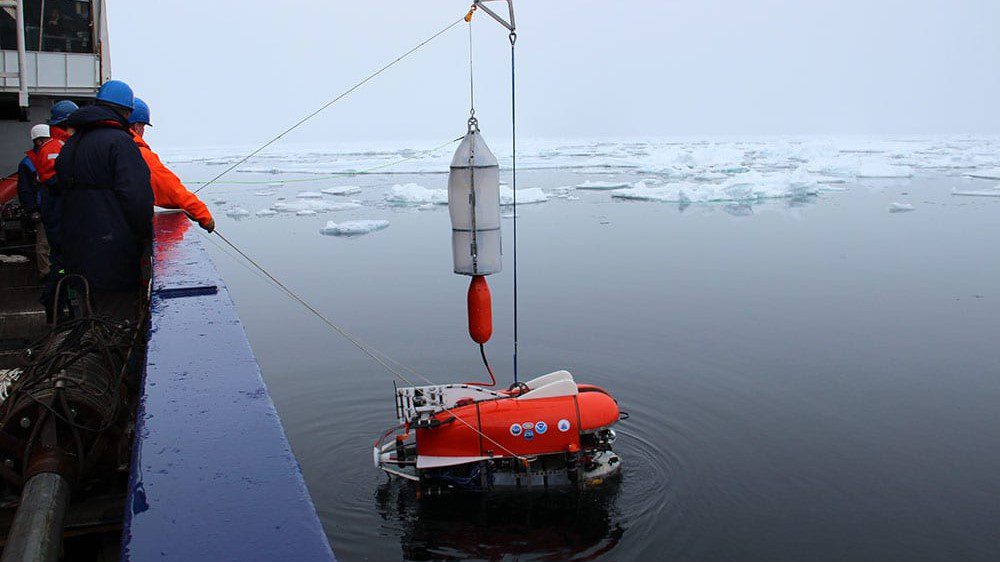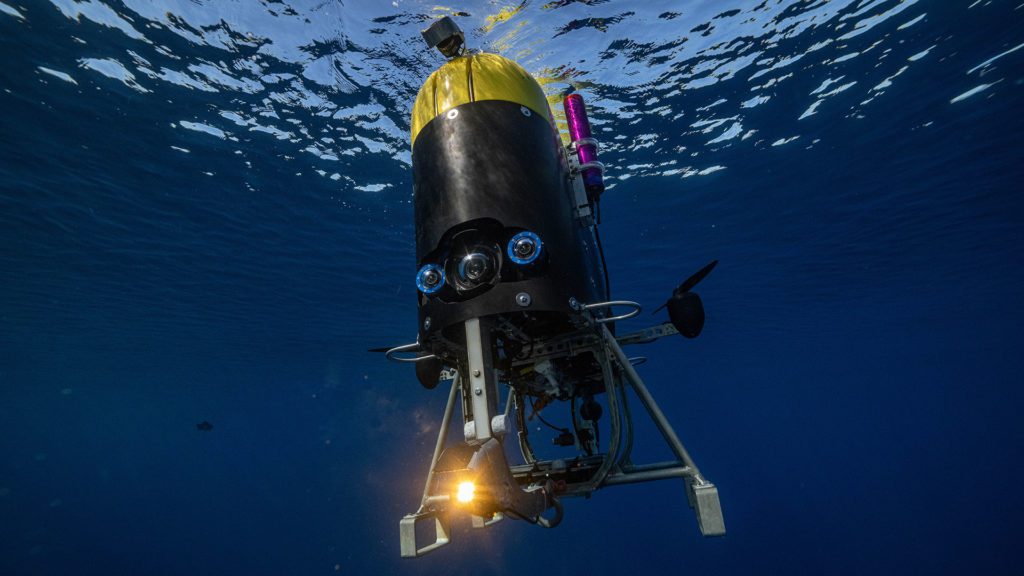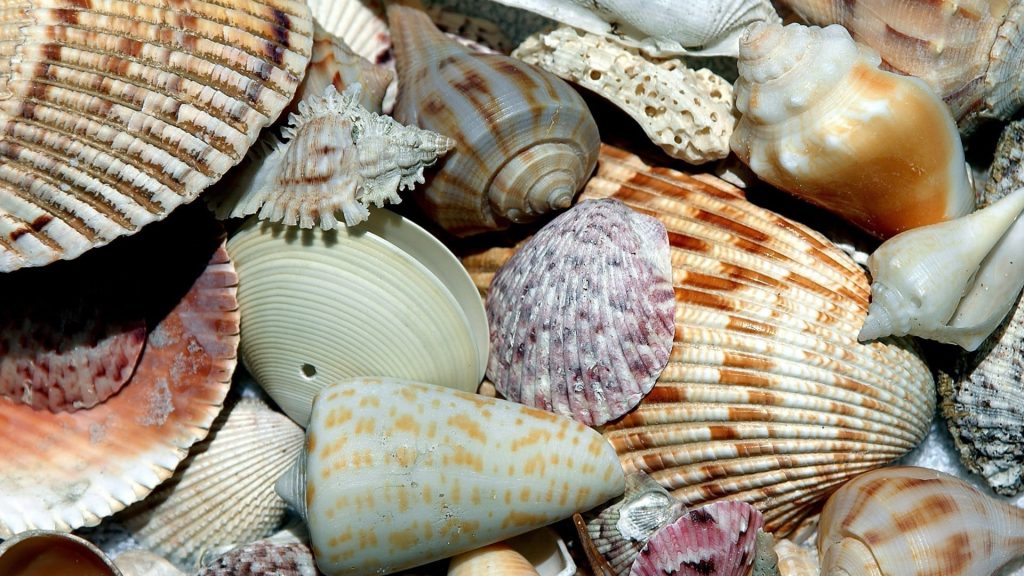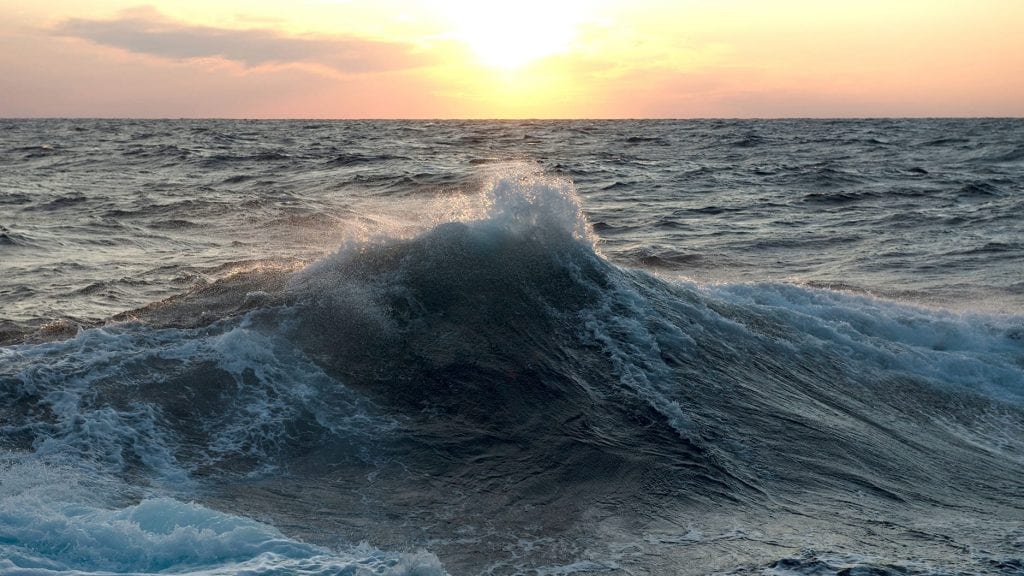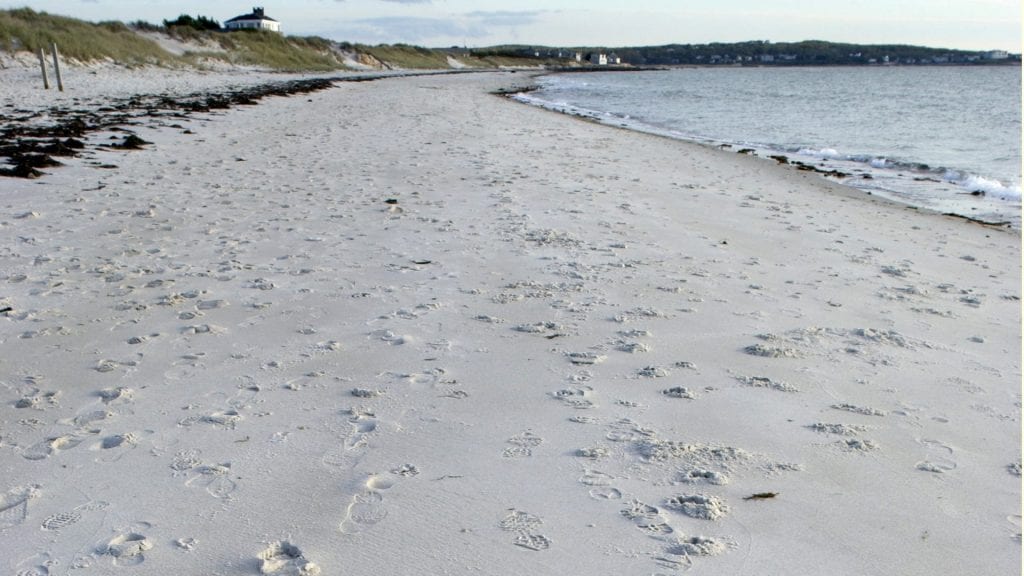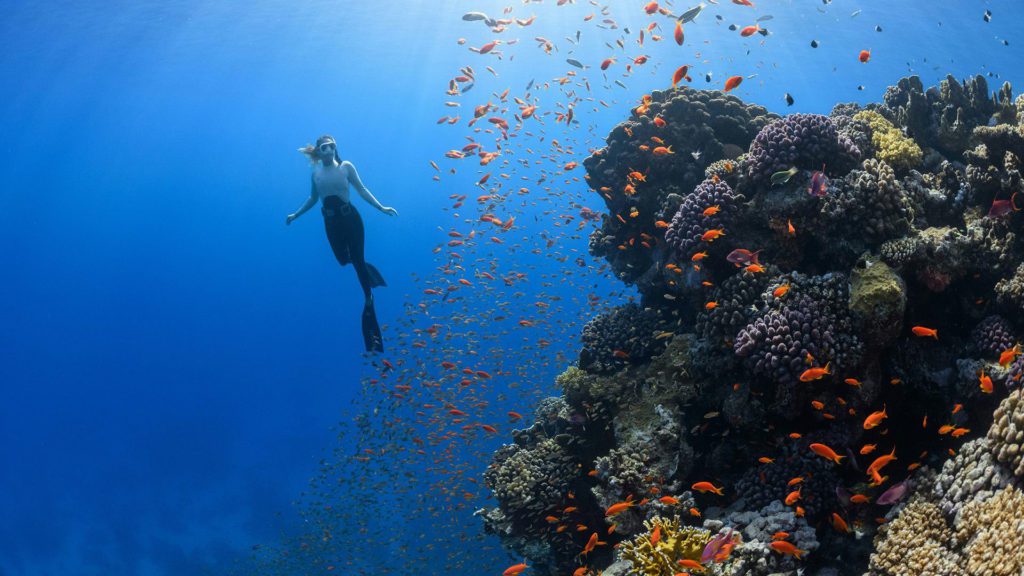Artificial Intelligence, or AI, can be found in cars, computers, robots, and more. It’s artificial, because people created it, and it’s intelligent because it uses computer models that can learn.
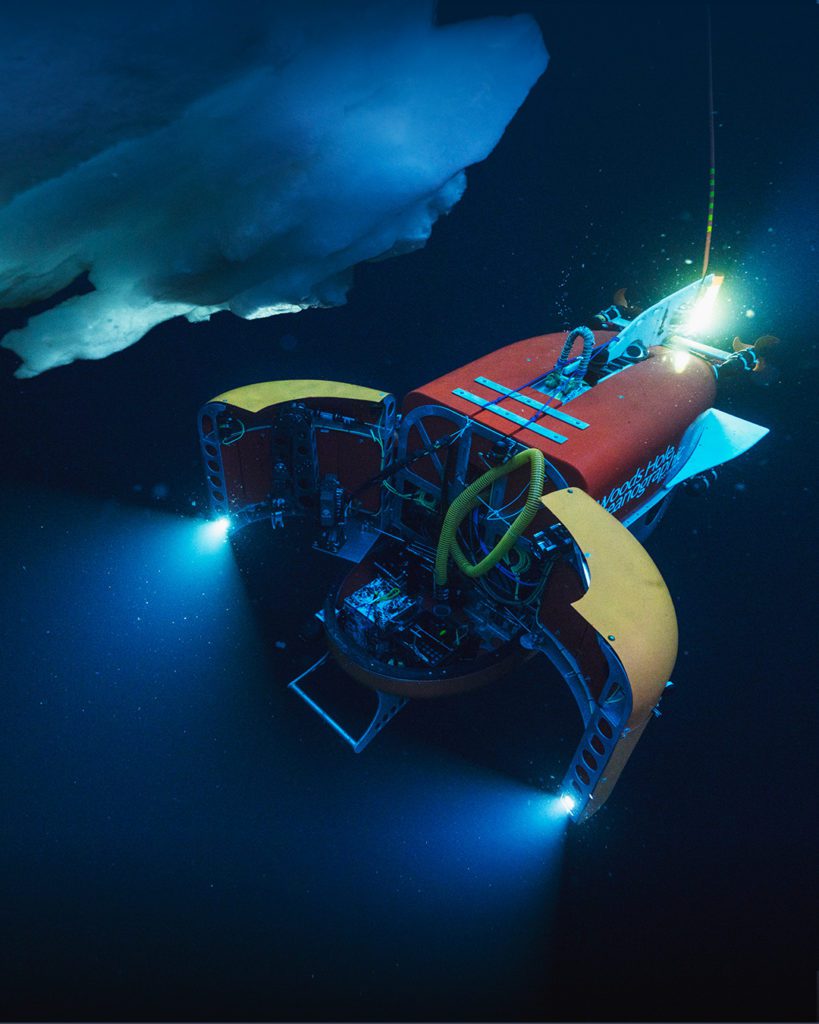
Computer scientists and engineers at WHOI are using an artificial intelligence software called "Spock" that allows vehicles like Nereid Under Ice (or "NUI") to autonomously determine areas along the seafloor to sample. (Photo by © Luis Lamar, Avatar Alliance Foundation)
Just like a person learns by experiencing something over and over again, scientists train AI models using lots and lots of data.
These are pieces of information about whatever task people want the AI to focus on.
On land, a company making a self-driving car would train its AI with millions of pictures of cars, trucks, and people. The AI learns to recognize people and vehicles—and then how to respond when it detects one. Just like a human driver, the more the AI learns, the safer it becomes when it pilots a car.
In a similar way, AI can be used to learn about the ocean, thanks to a new generation of autonomous underwater robots that are equipped with AI technology.
For example, these AI-driven robots can help study marine life. Most marine biologists study ocean animals while diving. This allows people to follow individual animals, watch different species interact, and see how animals use their habitat. But when a person is swimming in the sea, their presence may alarm the animals they are trying to observe. Animals may behave differently. They may hide or dive too far down for a person to follow. They may behave one way during the day and another at night when people can’t easily watch. One way around this is to tag animals, so they can be tracked from a boat. But tagging comes with its own challenges. Autonomous robots can address both of these issues.
WHOI scientists are developing AI-driven robots to learn about the ocean in new ways. One example is CUREE, a curious robot about the size of a large suitcase. Scientists have trained CUREE to identify fish, jellyfish, and other animals that live in coral reefs. When an interesting animal shows up on CUREE’s cameras, the researcher tells CUREE to follow it. Then the robot tracks the animal on its own. The idea is to eventually have many of these small robots in the ocean to help marine biologists understand how coral reefs and other ecosystems function.
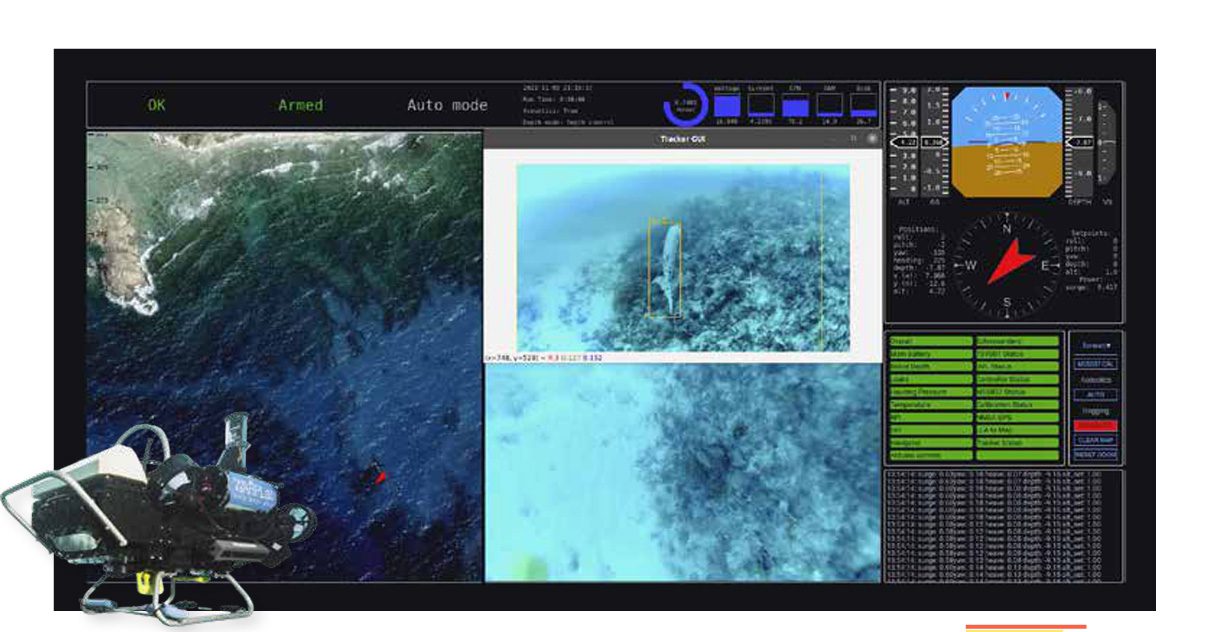
AI-driven robots can also help explore sea ice in the poles, and even submarine volcanoes. They are built to withstand tough environmental conditions—from extreme cold and heat to high pressure and gases that would be toxic to people. During recent research expedition to the Greek island of Santorini, an underwater robot with AI explored the underwater Kolumbo volcano on its own. It used its decision-making capabilities to decide which areas to investigate, and took samples of microbes growing in areas that would be dangerous for most marine life—all without people guiding it.
When it comes to using AI to explore the ocean, CUREE and NUI are just the beginning. There’s lots waiting in store for these intelligent robots as AI becomes more widely used, even to the deepest and darkest depths of the ocean.
RELATED VIDEOS
LEARN MORE
HROV Nereid Under Ice
The Nereid UI system provides scientific access to under-ice and ice-margin environments that is presently impractical or infeasible.
AUVs
AUVs are programmable, robotic vehicles that, depending on their design, can drift, drive, or glide through the ocean without real-time control by human operators.
» Mesobot
» REMUS
» SeaBED
» Sentry
» Spray Glider
» Slocum Glider
Cai, Veevee, personal communication
Hentz, Daniel. A curious robot is poised to expand reef research. Oceanus. December 1, 2021. https://www.whoi.edu/oceanus/feature/a-curious-robot-to-expand-coral-reef-research/
Lubofsky, Evan. Spock versus the volcano. Oceanus. July 15, 2021. https://www.whoi.edu/oceanus/feature/spock-versus-the-volcano/
WHOI. WHOI underwater robot takes first known automated sample from ocean. January 8, 2020. https://www.whoi.edu/press-room/news-release/whoi-underwater-robot-takes-first-known-automated-sample-from-ocean/
DIVE INTO MORE OCEAN FACTS
How are seashells made?
One of the most striking features of our beaches is seashells. Their whorls, curves, and shiny iridescent insides are the remains of animals. But where do they come from?
What causes ocean waves?
A trip to the ocean means sun, wind, and waves. Surfers ride them. Children play in them. Swimmers dive beneath them. But what causes waves?
How is beach sand created?
Beaches can be white, black, green, red and even pink. What creates those different colors? Why is some sand soft and fine, but other types feel rough? Where does beach sand come from, anyway?
Why is the ocean vital for our survival?
Without the ocean, life as we know it wouldn’t be possible.

